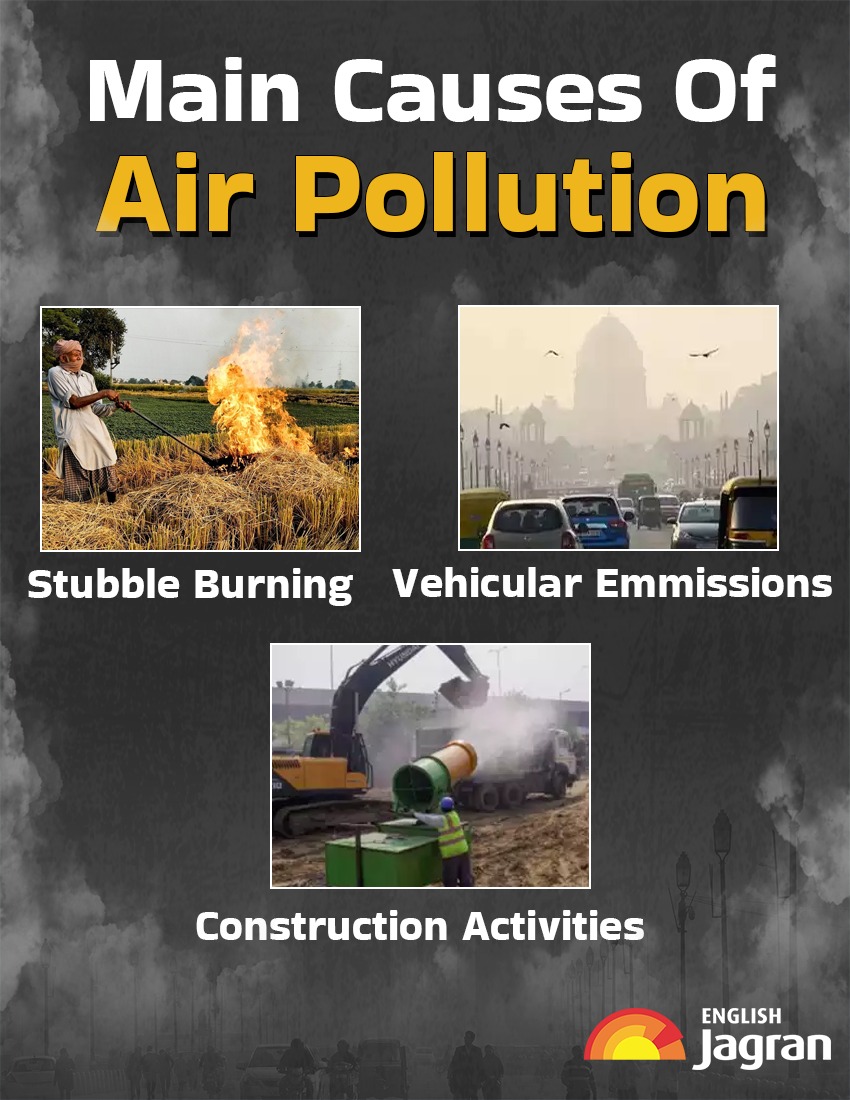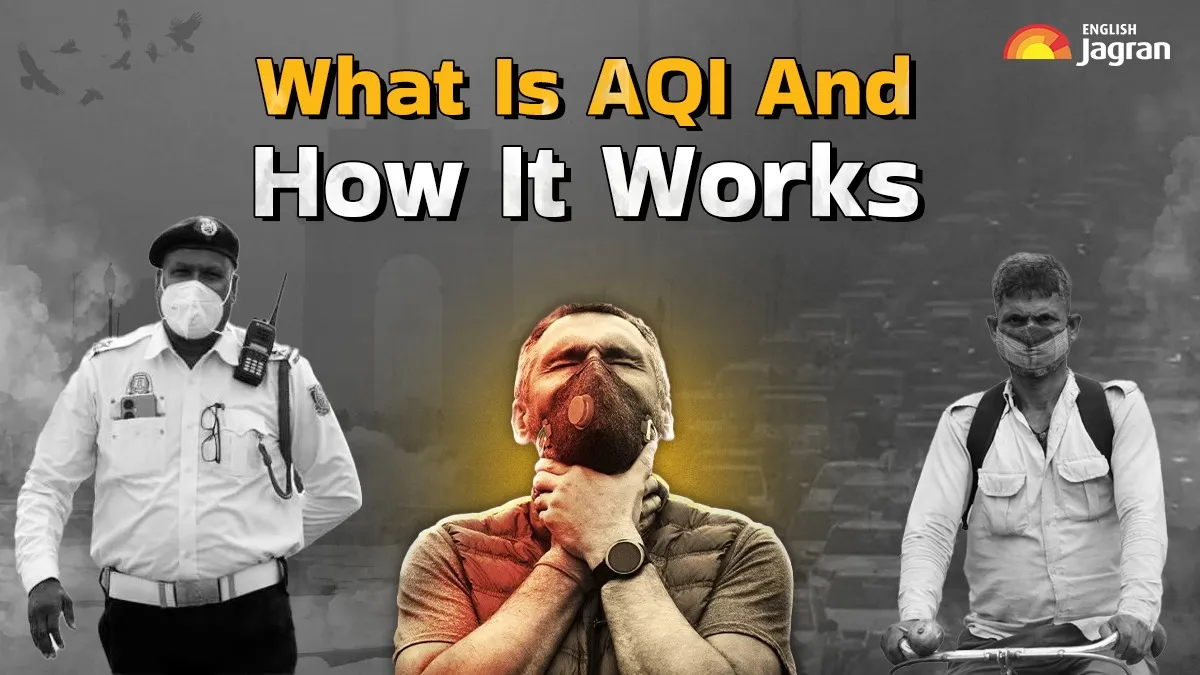- By Talibuddin Khan
- Wed, 20 Nov 2024 07:11 PM (IST)
- Source:JND
Air Quality Index: The national capital of India, Delhi, has been reeling under a blanket of toxic air with the Air Quality Index slipping to the severe plus category. However, the national capital on Wednesday witnessed a slight improvement in the air pollution levels, with AQI recorded at 426 in the severe category, three days after the AQI deteriorated to the severe plus category at over 490. Apart from Delhi, cities in the national capital region (NCR) including Noida, Greater Noida, Faridabad, Ghaziabad and Gurugram are also witnessing a thick layer of smog, reducing the visibility significantly on key routes. Delhi's air quality first breached the "severe plus" category on Sunday, leading to the implementation of Stage IV restrictions under the Graded Response Action Plan (GRAP). These measures include a complete ban on construction and demolition activities and suspension of physical classes in schools.
Air pollution has become one of the most pressing environmental challenges in India, driven by factors like industrial emissions, vehicle exhaust, construction dust, agricultural stubble burning, rapid urbanisation and household fuel usage. To assess air quality, the Air Quality Index (AQI) is used as a standardised tool that converts complex pollution data into simple, understandable categories. It evaluates pollutants such as PM2.5, PM10, ozone, nitrogen dioxide, sulfur dioxide, and carbon monoxide, measured over specific periods to determine their impact on health and the environment. It is calculated based on pollutant concentrations over specific time periods, providing a clear indicator of air quality's potential impact on human health.
What Is The Air Quality Index?
In its broader description, the air quality index (AQI) provides the range of the air quality at a particular place daily. The higher the AQI value, the greater the level of air pollution and the greater the health concerns. The AQI is measured in different categories ranging from Good to Severe Plus and Hazardous. The purpose of the AQI is to help people know how the local air quality impacts their health so that they can implement measures to safeguard themselves from the harm of toxic pollutants.

The Central Pollution Control Board (CPCB) calculates the AQI for five major air pollutants, for which national air quality standards have been established to safeguard public health. Each pollutant is assigned an individual AQI value based on its concentration, and the overall AQI is determined by the highest value among these pollutants.
These five air pollutants are:
1. Ground-level ozone (O3): A harmful pollutant formed when sunlight reacts with pollutants like nitrogen oxides and volatile organic compounds.
2. Particle pollution/particulate matter (PM2.5/pm 10): Tiny particles suspended in the air that can penetrate deep into the respiratory system. While PM 10 particles have a diameter of 10 microns or less, PM2.5 particles have a diameter of 2.5 microns or less.
3. Carbon Monoxide (CO): A toxic gas resulting from incomplete combustion of fossil fuels.
4. Sulfur dioxide (SO2): A gas released by industrial processes and burning fossil fuels.
5. Nitrogen dioxide (NO2): Emitted from vehicles and industrial activities.

What Is Particulate Matter (PM)?
Particulate matter (PM) is a mixture of solid and liquid particles in the air. These particles come in many forms, such as dust, smoke, pollen and liquid droplets. These particles vary widely in size, composition, and origin. They can include inorganic ions, metallic compounds, elemental carbon, organic compounds and compounds from the Earth's crust. Particulate matter is divided into three categories, PM1, PM10 and PM2.5, based on their size.
How Is AQI Calculated?
Different countries use different point scales to calculate the air quality index. India uses a 500-point scale, wherein a rating between 0 and 50 is considered good, while a Rating between 301 to 500 range is deemed hazardous or severe plus. Every day monitors record concentrations of the major pollutants. These raw measurements are converted into a separate AQI value for each pollutant (ground-level ozone, particle pollution, carbon monoxide, and sulfur dioxide) using standard formulae developed by the CPCB.
Air Quality Index Categories And Their Impact On Health:
Good (0–50) - Minimal Impact
Satisfactory (51–100) - This may cause minor breathing difficulties in sensitive people.
Moderately polluted (101–200) - May cause breathing difficulties in people with lung disease like asthma, and discomfort to people with heart disease, children and older adults.
Poor (201–300) - May cause breathing difficulties in people on prolonged exposure, and discomfort to people with heart disease.
Very Poor (301–400) - May cause respiratory illness in people on prolonged exposure. The effect may be more pronounced in people with lung and heart diseases.
Severe (401-500) - May cause respiratory issues in healthy people, and serious health issues in people with lung/heart disease. Difficulties may be experienced even during light physical activity.

National Air Quality Standards
| Pollutant | Time Weighted Average | Concentration in Ambient Air | |
| Industrial, Residential, Rural and Other Areas | Ecologically Sensitive Area (notified by Central Government) | ||
| Sulphur Dioxide (SO2), µg/m3 | Annual 24 hours | 50 80 | 20 80 |
| Nitrogen Dioxide (NO2), µg/m3 | Annual 24 hours | 40 80 | 30 80 |
| Particulate Matter (size less than 10 µm) or PM10 µg/m3 | Annual 24 hours | 60 100 | 60 100 |
| Particulate Matter (size less than 2.5 µm) or PM2.5 µg/m3 | Annual 24 hours | 40 60 | 40 60 |
| Ozone (O3) µg/m3 | 8 hours 1 hour | 100 180 | 100 180 |
| Lead (Pb) µg/m3 | Annual 24 hours | 0.50 1.0 | 0.50 1.0 |
| Carbon Monoxide (CO) mg/m3 | 8 hours 1 hour | 02 04 | 02 04 |
| Ammonia (NH3) µg/m3 | Annual 24 hours | 100 400 | 100 400 |
| Benzene (C6H6) µg/m3 | Annual | 5 | 5 |
| Benzo(a)Pyrene (BaP)- particulate phase only, ng/m3 | Annual | 1 | 1 |
| Arsenic(As), ng/m3 | Annual | 6 | 60 |
| Nickel (Ni), ng/m3 | Annual | 20 | 20 |
Difference Between Global And Regional AQI Systems
While the concept of the Air Quality Index (AQI) is universal, its implementation varies between global and regional systems, influenced by local environmental conditions, dominant pollutants and health risks among people. Global AQI systems, such as the World Health Organization (WHO), provide universally applicable guidelines based on comprehensive research. However, regional systems, like India’s National Air Quality Index (NAQI), which is managed by the Central Pollution Control Board (CPCB), are tailored to specific local contexts. Unlike some global systems, the Indian AQI includes additional pollutants like ammonia (NH3) and lead (Pb), which are significant in the Indian context due to agricultural practices and industrial processes.
Main Causes Of Air Pollution
Vehicle Emissions: According to a report in the research journal Science Direct, globalisation and liberalisation policies in the 1990s resulted in a 92.6% increase in road vehicles between 1980-81 and 2003-04. These vehicles, primarily running on fossil fuels, are major contributors to greenhouse gas emissions, especially CO2. In 2003-04, India's transport sector emitted approximately 258.10 Tg CO2, with 94.5% attributed to road transport, the report stated.
Construction Activities: An IIT Kanpur study commissioned by the Delhi government identified construction and demolition activities as the largest contributor to PM10 levels in Delhi's air, accounting for 56%. Industrial activities ranked second with a 10% share, followed by vehicle emissions at 9%. For PM2.5 levels, construction and demolition activities contributed 38%, while vehicle emissions were responsible for 20%.
Stubble Burning: Stubble burning is considered the third-largest contributor to air pollution. This issue stems from a shift in agricultural practices following the Green Revolution. While Punjab and Haryana were primarily wheat-producing states, large-scale paddy cultivation began as a cash crop. The International Rice Research Institute (IRRI) estimates that producing one kilogram of rice requires 500 to 1,000 litres of water, which has led to a groundwater crisis in these states.
In response, the Punjab government passed the Punjab Subsoil Water Conservation Act in 2009, mandating that paddy transplantation begin after June 10 to conserve groundwater. This reduced the time available for harvesting and sowing, prompting farmers to burn stubble for quick field clearance. Despite government fines and incentives, efforts to curb stubble burning have had limited success.

Shyam Krishna Gupta, an industry representative and member of the Commission for Air Quality Management in the National Capital Region, acknowledges a reduction in stubble-burning incidents but emphasizes that the issue persists. Gupta suggests developing harvesters that can collect stubble alongside grain or introducing initiatives where the government manages stubble collection and repurposes it for industrial use.
How Air Pollution Impacts People's Health:
Reports from the Indian Council for Medical Research (ICMR), the World Heart Federation and the Jayadeva Institute of Cardiovascular Sciences and Research indicate that pollution poses a severe threat to health. It is especially fatal for individuals with pre-existing conditions and significantly reduces the life expectancy of healthy people.
The World Heart Federation, in its research report, highlights that deaths due to cardiovascular diseases linked to air pollution have increased over the past decade and are projected to rise further. The report emphasizes the urgent need for a global policy on air pollution. It further reveals that failure to meet air quality targets is exacerbating various health issues, including obesity and diabetes, and labels air pollution as the "biggest environmental health risk." As a result, approximately 1.9 million people die from heart disease, and nearly 1 million from strokes each year, with air pollution being the primary cause.
A study conducted by the Jayadeva Institute of Cardiovascular Sciences and Research in Bengaluru identified air pollution and stress as leading causes of heart attacks among Indians aged 18–45. Dr CN Manjunath, the institute's director, stated, "In the last decade, there has been a noticeable rise in heart attack cases among young and middle-aged individuals. In a study conducted between 2014 and 2020 involving over 5,500 cardiac patients at Jayadeva, more than 25% of cases lacked traditional risk factors like diabetes, high blood pressure, smoking, or high cholesterol. Instead, air pollution emerged as a major contributor."

An ICMR report on air pollution's impact on health and life expectancy underscores that it is a significant risk factor for death in India. In 2017, one in every eight deaths in India was linked to air pollution. Outdoor air pollution was responsible for about 670,000 deaths, while household air pollution accounted for approximately 480,000 deaths. The leading non-communicable diseases caused by air pollution include chronic obstructive pulmonary disease (COPD), ischemic heart disease, stroke, diabetes and lung cancer.
Dr Sandeep Mishra, former director of AIIMS Cardiology, explained that PM2.5 particles — extremely fine pollutants present in the air — enter the lungs through breathing and then reach the bloodstream. These particles cause infections in various parts of the body, including the heart and arteries, gradually impairing cardiac functions. Prolonged exposure to polluted air can lead to heart attacks due to congestion and inflammation. Additionally, increased levels of PM2.5 lead to excessive mucus production and worsening respiratory conditions.
Dr Ishwar Gilada, Secretary General of the Organized Medicine Academic Guild, added that PM2.5 affects not only the heart but also the entire circulatory system. These particles travel through the bloodstream, potentially causing symptoms such as headaches, dizziness, irritability and breathlessness. Patients with bronchitis are particularly vulnerable, and prolonged exposure to polluted air can endanger their lives, necessitating special care and precautions.

